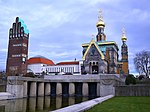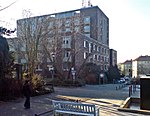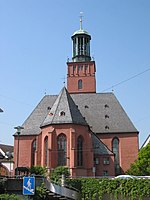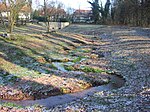The Technische Universität Darmstadt (official English name Technical University of Darmstadt, sometimes also referred to as Darmstadt University of Technology), commonly known as TU Darmstadt, is a research university in the city of Darmstadt, Germany. It was founded in 1877 and received the right to award doctorates in 1899. In 1882, it was the first university in the world to set up a chair in electrical engineering. In 1883, the university founded the first faculty of electrical engineering and introduced the world's first degree course in electrical engineering. In 2004, it became the first German university to be declared as an autonomous university. TU Darmstadt has assumed a pioneering role in Germany. Computer science, electrical engineering, artificial intelligence, mechatronics, business informatics, political science and many more courses were introduced as scientific disciplines in Germany by Darmstadt faculty.The Johannes Gutenberg University Mainz, the Goethe University Frankfurt and the Technische Universität Darmstadt together form the Rhine-Main-Universities (RMU). TU Darmstadt is a member of TU9, a network of the most notable German Technische Universitäten (universities of technology) and of the EU-supported European University Alliance Unite! (University Network for Innovation, Technology and Engineering).TU Darmstadt is highly visible for research and innovation in Computer Science. The university received the highest number of competitive grants in the field of computer science from the German Research Foundation (Förderatlas 2021) and is ranked 12th in Europe for academic publications in computer science (2017 to 2021). TU Darmstadt is a location of the German Research Center for Artificial Intelligence and seat of the Hessian Center for Articifical Intelligence. TU Darmstadt is a member of the Darmstadt-based ATHENE-Center, the largest research institute for applied cybersecurity in Europe. The university is located in the IT cluster Rhine-Main-Neckar, the "Silicon Valley of Germany".
Graduates of TU Darmstadt include Nobel Prize winners, entrepreneurs, managers, billionaires and politicians. As of September 2019, the university is associated with 4 Nobel laureates and 3 Wolf Prize in Physics laureates. For several years, TU Darmstadt has been one of the universities with the most top managers in the German economy. The university is currently among the top 3. The graduates include Oliver Zipse, Peter Grünberg, Chaim Weizmann and John Tu.










